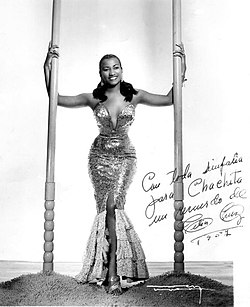Celia Cruz

Biography
Celia Cruz stands as one of the most influential voices in Latin music history, celebrated worldwide as the “Queen of Salsa.” Her remarkable career, vibrant personality, and unmistakable cry of “¡Azúcar!” made her an enduring icon in music and popular culture.
Early Life and Background
Celia Cruz was born in Havana, Cuba, where she developed a love for music from an early age. Growing up in a large family, she was encouraged by her mother and teachers to pursue her singing talent. As a teenager, Celia Cruz began performing in radio contests and local cabarets, captivating audiences with her powerful vocals and charismatic stage presence.
Rise to Fame and Career Highlights
Celia Cruz’s professional journey began in earnest when she joined the legendary Cuban orchestra La Sonora Matancera in the 1950s. Her dynamic performances and unique voice quickly set her apart in the male-dominated world of salsa. After moving to the United States following the Cuban Revolution, Celia Cruz achieved international fame. She collaborated with top musicians such as Tito Puente, Johnny Pacheco, and Willie Colón, helping to popularize salsa music globally. Her discography spans over fifty albums, featuring timeless hits like “Quimbara,” “La Vida Es Un Carnaval,” and “Bemba Colorá.”
Achievements and Recognition
Throughout her career, Celia Cruz received numerous awards, including several Grammys and Latin Grammys. She was honored with a star on the Hollywood Walk of Fame and recognized for her lifelong contribution to Latin music. Celia Cruz’s vibrant costumes and exuberant personality made her a cultural ambassador, inspiring new generations of artists. Her influence extends beyond music: she is often referenced in art, theater, and even academic studies on Afro-Latin identity.
Personal Life and Legacy
Celia Cruz’s personal life was as remarkable as her career. She was married to Pedro Knight, a musician and her longtime collaborator. Known for her warm, generous spirit, Celia Cruz remained deeply connected to her Cuban roots while embracing her adopted home in the United States. Despite facing exile from Cuba, she never lost her sense of cultural pride, which resonated powerfully in her music and public appearances.
Lasting Impact and Cultural Influence
Celia Cruz’s legacy continues to thrive. Museums, documentaries, and tributes worldwide celebrate her memory and achievements. Her music remains a staple at Latin celebrations, and her story inspires artists across genres. For more on salsa legends, explore the careers of Tito Puente or Johnny Pacheco, both of whom worked closely with Celia Cruz. You can also visit our [Latin music] category for related artists and cultural icons.
Conclusion
Celia Cruz’s life and music exemplify resilience, joy, and cultural pride. As the Queen of Salsa, she left an indelible mark on the world, ensuring her voice and spirit will inspire generations to come.
Detailed Information
| Full Name | Úrsula Hilaria Celia de la Caridad Cruz Alfonso |
| Gender | Female |
| Height | 5 ft 5 in |
| Eye Color | Brown |
| Hair Color | Black |
| Marital Status | Married |
| Mother | Catalina Alfonso |
| Siblings | Dolores Cruz, Gladys Cruz, Bárbaro Jiménez |
| Years Active | 1948–2003 |
| Known For | Queen of Salsa, Latin music icon |
| Major Achievements | Three Grammy Awards, Four Latin Grammy Awards, National Medal of Arts, Hollywood Walk of Fame |
| Net Worth | $10 million |
| Income Sources | Music sales, concerts, endorsements |



